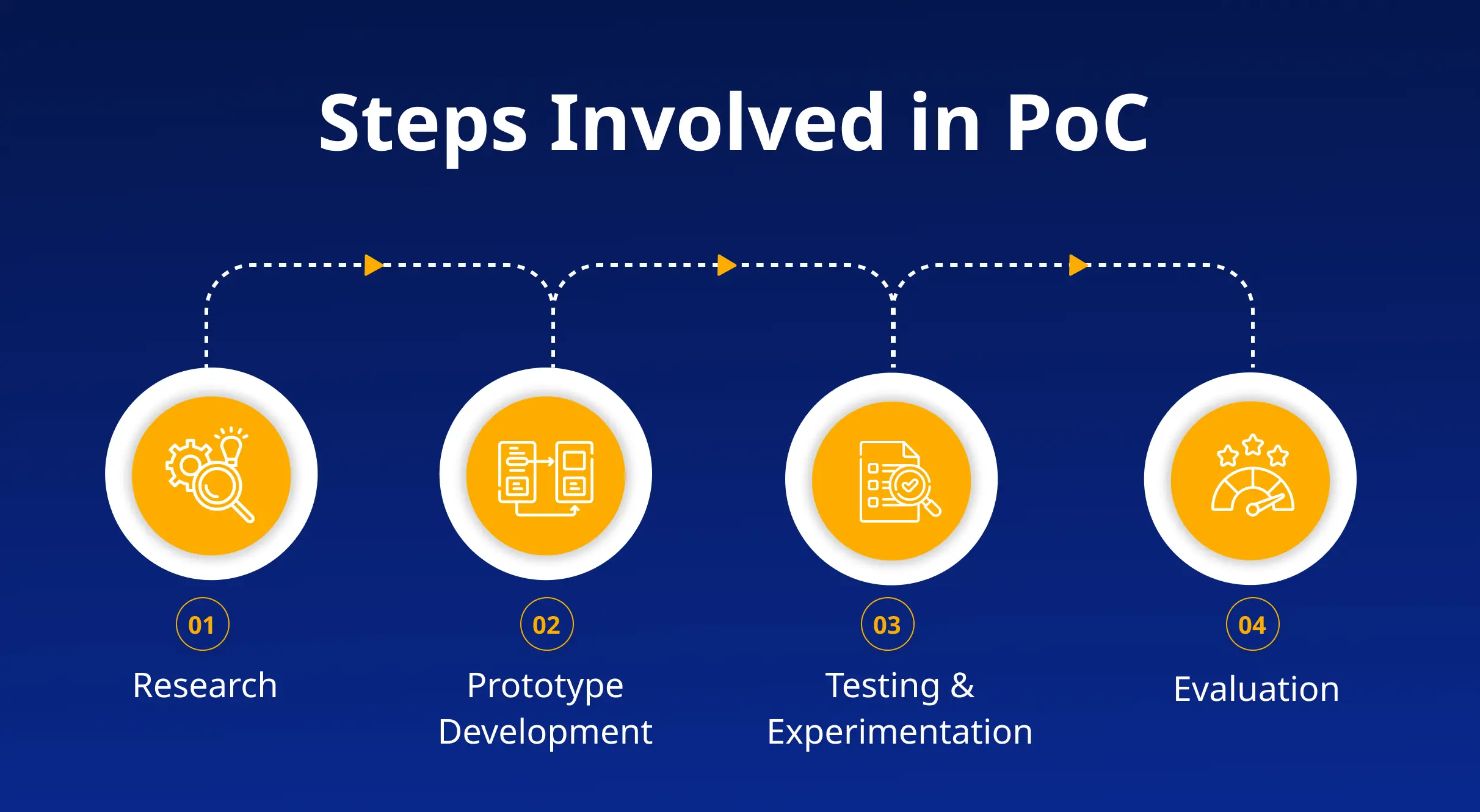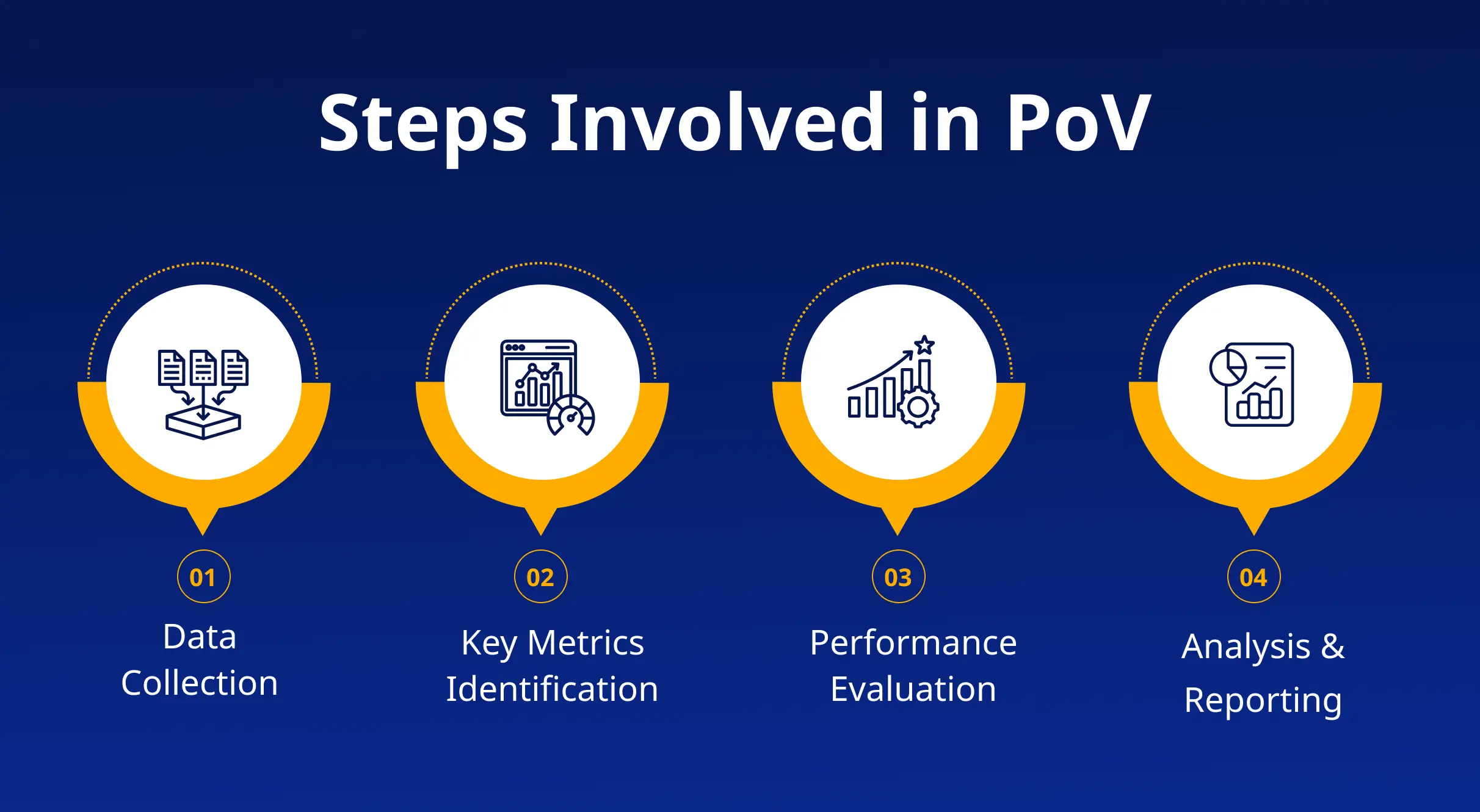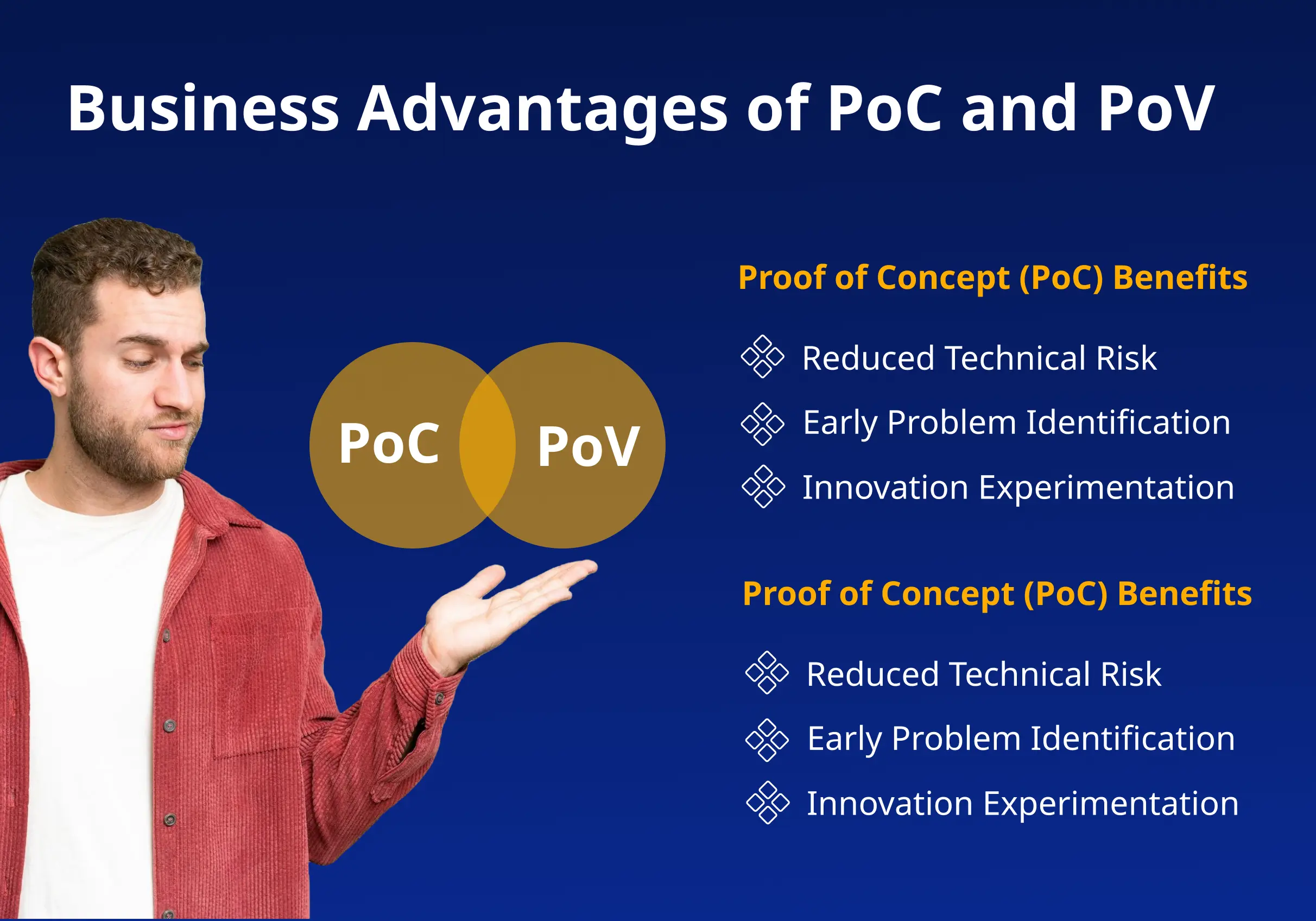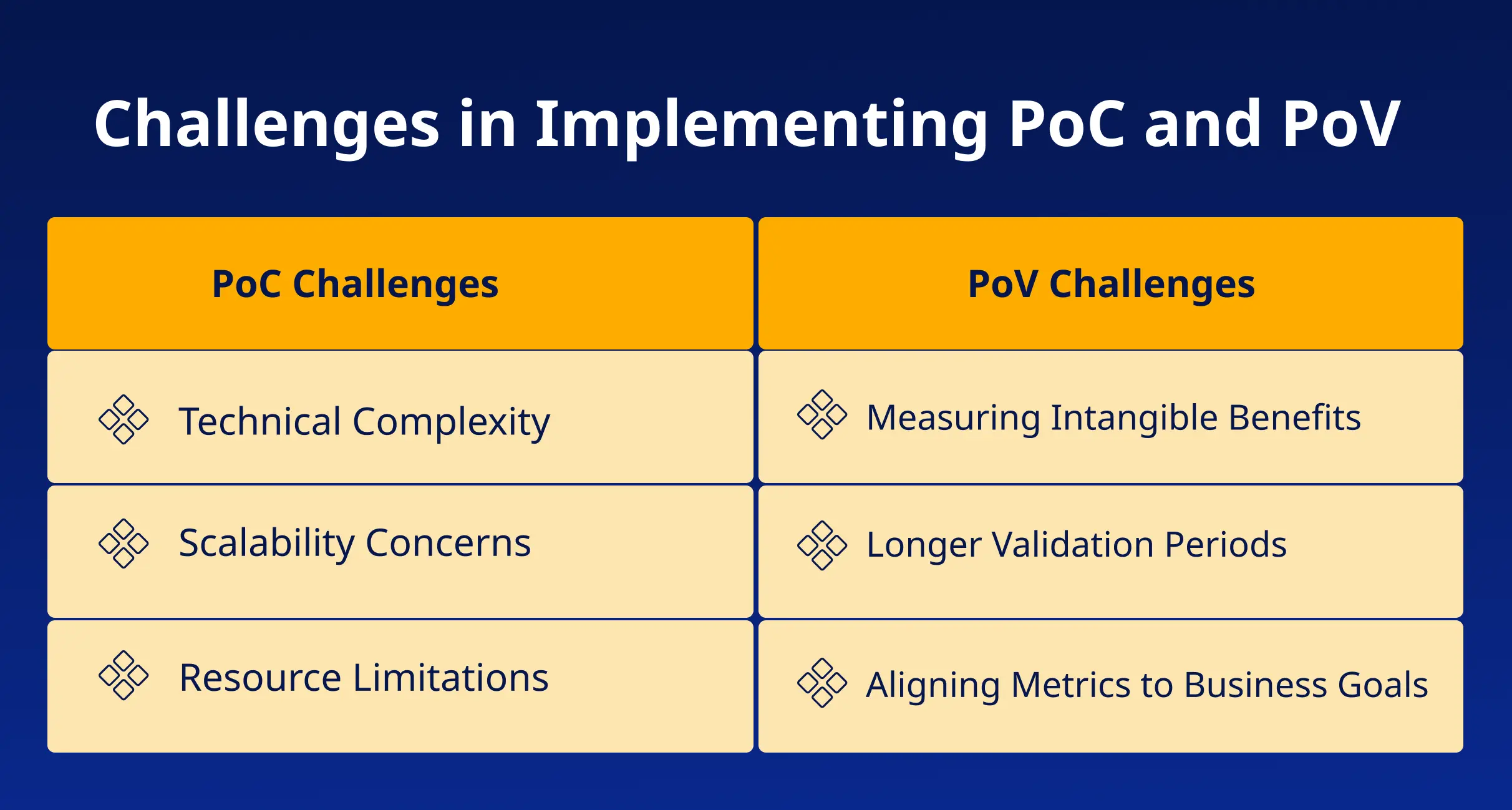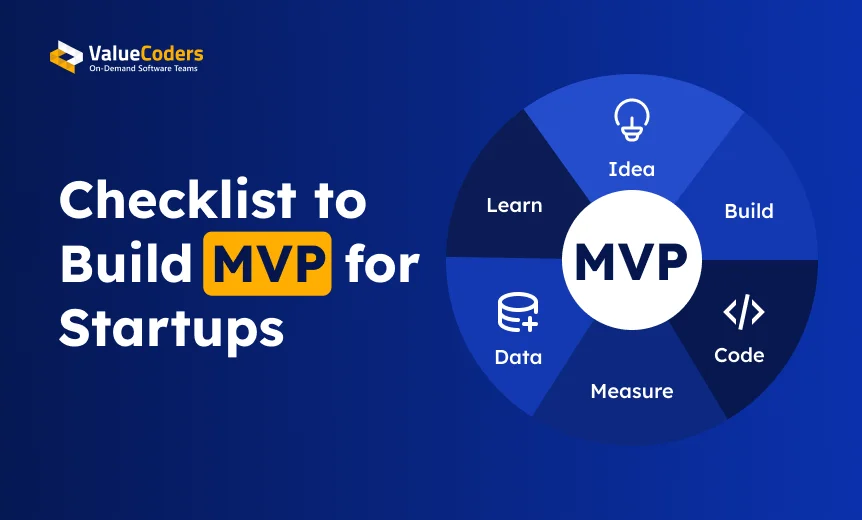A short-form video platform, Quibi, was founded in 2018 with an investment of $1.75 billion. The aim was to disrupt streaming market by allowing mobile users to switch between portrait and landscape modes, easily.
Despite its well-thought-out strategy, the platform was dissolved in just 6 months (in 2020) as there was no clear value demo, an unproven engagement model, and improper user validation.
The lack of using PoC or PoV to validate audience needs, content preferences, and market fit played a significant role in its failure.
Hence, validating your business idea with POC & POV in the early stages of software development helps you avoid costly mistakes and ensure the success of your project.
Validating your business idea with POC and POV early on helps prevent costly mistakes and ensures project success.
What is Proof of Concept?
Proof of Concept (PoC) is a small-scale project designed to test the technical feasibility of an idea, technology, or approach. This phase assesses if a solution can be effectively implemented in real-world conditions.
The primary goal of PoC is:
“to validate whether a concept or solution can work on a technical level before a company commits significant resources to full-scale development.”
Creating a PoC typically involves several steps:
- Research: Understanding the problem and potential solutions.
- Prototype Development: Building a basic version of the solution to test functionality.
- Testing & Experimentation: Running tests to ensure the concept works as expected.
- Evaluation: Analyzing the results to make informed decisions on further development.
Businesses commonly use PoC when exploring new technology, software applications, or product ideas that involve technical uncertainty. For example, PoC is useful in scenarios like implementing a new AI algorithm, blockchain technology, or custom software.
Avoid costly missteps by distinguishing PoV from PoC with our expert guidance.
Examples of PoC:
- IT Industry: Testing a new cloud-based solution for scalability before full deployment.
- Healthcare: Creating an AI-based diagnostic tool prototype to verify its disease detection accuracy.
- Manufacturing: Developing a small-scale robotic system to test its effect on production efficiency.
What is Proof of Value (PoV)?
Proof of Value process focuses on measurable outcomes and shows the business value of a solution. These outcomes include return on investment (ROI), operational efficiency, and increased revenue.
Unlike Proof of Concept, which is focused on technical feasibility, PoV evaluates how well the solution meets business goals.
It helps decision-makers assess the solution’s impact and benefits before committing fully.
Validating PoV typically involves these steps:
- Data Collection: Gathering relevant data to assess the solution’s performance.
- Key Metrics Identification: Defining key performance indicators (KPIs) like ROI, cost savings, user adoption, or efficiency improvements.
- Performance Evaluation: Measuring the solution’s impact against these metrics.
- Analysis & Reporting: Review the data to determine if the solution delivers sufficient value to proceed with full-scale implementation.
Examples of PoV:
- SaaS Solutions: Companies might use PoV to test a SaaS product’s ability to improve workflows and provide a positive ROI before fully integrating it into their systems.
- Enterprise IT: A business could run a PoV to assess whether a new data analytics platform provides actionable insights that translate to business growth.
- Retail: Evaluating the potential increase in sales by implementing a new CRM solution based on its performance during the PoV phase.
Discover how our PoC and PoV can accelerate your product's market success.
Key Differences Between Proof of Concept and Proof of Value
“Proof of value vs Proof of concept” is differentiated using various parameters as discussed below:
1. Focus
The primary distinction lies in the focus of each process.
A Proof of Concept (PoC) is centered on determining the technical feasibility of an idea or technology. It answers the question, “Can we build this?”
In contrast, a Proof of Value (PoV) focuses on business value, evaluating whether a solution will deliver measurable outcomes like ROI or efficiency gains. PoV addresses the question, “Will this deliver value to our business?”
2. Timeline and Scope
PoCs typically have a shorter timeline and a more limited scope. They involve quick experiments or prototypes to test specific functionalities or technologies.
On the other hand, PoV requires a more extended timeline. It covers a broader scope, including data analysis, performance evaluations, and business impact assessments to validate the solution’s worth.
3. Outcome
A PoC typically results in a technical prototype or an experimental model that demonstrates feasibility but not necessarily functionality at scale.
Conversely, a PoV delivers validated business benefits, such as potential cost savings, increased efficiency, or higher revenue.
4. Target Audience
PoC is primarily intended for technical teams like developers and engineers who must ensure a solution is technically achievable. In contrast, PoV is aimed at stakeholders and decision-makers—executives, product owners, or business leaders—who must understand whether a solution aligns with business goals and justifies investment.
Also Read: Everything You Need to Know About Proof of Concept (PoC)
Benefits of Conducting PoC and PoV
Proof of Concept (PoC) Benefits:
1. Reduced Technical Risk: Identifies potential technical issues early in the process.
2. Early Problem Identification: Helps address critical challenges before full-scale implementation.
3. Innovation Experimentation: Allows teams to test and innovate with new ideas safely.
Proof of Value (PoV) Benefits:
1. Improved Stakeholder Buy-in: Demonstrates business value to decision-makers.
2. Clearer Value Proposition: Highlights the tangible benefits of the solution.
3. Stronger Business Case: Builds a solid case for investment based on proven value.
Streamline decision-making with our precise PoC and PoV strategies tailored to your goals.
When to Choose One Among Proof of Value vs Proof of Concept?
Here, we have listed different scenarios considering which you can choose the respective model:
Project Stage
Choosing between Proof of Concept (PoC) and Proof of Value (PoV) depends mainly on the stage of your project.
PoC is most suitable in the early phases of product or service development when you need to test whether an idea or technology is feasible before further investment.
On the other hand, PoV is ideal in later stages, after the technical feasibility has been validated, and you want to ensure that the solution delivers measurable business value.
Business vs. Technical Validation
If your goal is to validate the technical functionality—whether something can work from a development or engineering standpoint—then a PoC is the right choice.
However, if your focus is on business outcomes—such as proving the solution’s ability to drive ROI, increase efficiency, or meet market demand—then a PoV is more appropriate.
Resource Allocation
Choosing between PoC and PoV also depends on your budget, time, and resources.
A PoC typically requires fewer resources since it’s shorter and more focused on technical validation.
A PoV, however, can be more resource-intensive, as it involves collecting data, analyzing performance, and aligning outcomes with business goals to justify further investment. Understanding your resource capacity will help determine which approach to use.
Challenges in Implementing PoC and PoV
There are some challenges faced by developers while implementing Poc and Pov as discussed below:
PoC Challenges:
Technical Complexity: Proof of Concept testing often involves testing new or unfamiliar technologies. This poses difficult technical hurdles that must be overcome quickly.
Scalability Concerns: PoC is designed to prove feasibility at a small scale, but this can raise concerns about whether the solution will scale efficiently to meet extraordinary demands.
Resource Limitations: PoCs are often limited in terms of time, budget, and manpower, making it difficult to explore all the potential a technical solution may have.
PoV Challenges:
Measuring Intangible Benefits: Proving business value through a solution is not easy, as some benefits, like customer satisfaction and brand reputation, are intangible and difficult to quantify.
Longer Validation Periods: A Proof of Value might need longer to generate enough data and measure results. This can delay the final decision.
Aligning Metrics to Business Goals: One key challenge is to ensure that the metrics used to validate the PoV must align with the company’s objectives. If not, the results may fail to resonate with stakeholders.
Also Read: POC, MVP, or Prototype: Decoding the Ideal Launchpad for Your Business Triumph
Top Industries Followed PoC
1. Healthcare
A hospital, Flatiron Health, wanted to implement AI-powered diagnostic tools to assist doctors in identifying early signs of certain diseases.
Before fully integrating the solution, they ran a PoC using a limited dataset to test whether the AI could detect anomalies in medical images accurately. They also worked with oncology clinics.
The PoC successfully demonstrated the feasibility of AI integration and was acquired by Roche for its data-driven cancer insights. The POC concept proved the tool’s technical viability without scaling it to the entire hospital system.
2. IT Services
A popular software tool, Slack, used internal teams to refine and validate the communication tool. Before investing heavily in its development, it created a proof of concept (PoC) to test the interoperability.
The PoC allowed it to determine potential technical obstacles and let it become a global leader in workplace communication.
3. Retail
A large retail company, Zappos, explored augmented reality (AR) for online shoe sales. It ran a PoC in a few flagship stores, testing AR on different devices and validating sales with a lean inventory approach.
The PoC helped validate the technology’s functionality before rolling it out to all stores and it is now a billion-dollar eCommerce brand.
4. Finance
A financial company, Square, wanted to introduce blockchain for secure cross-border transactions. Before overhauling their system, they conducted a PoC by running blockchain-powered transactions between two branches.
The PoC successfully demonstrated that blockchain could improve the speed and security of transactions. It achieved global adoption in the payment industry.
We help you focus on feasibility or value with tailored proof-of-concept and proof-of-value frameworks.
Top Industries Followed POV
1. SaaS
Salesforce, a SaaS company offering customer relationship management (CRM) solutions, introduced a new feature to improve lead conversion rates. They ran a PoV and targeted early adopters with cloud CRM.
The results showed an apparent increase in conversions, demonstrating the feature’s return on investment (ROI) and justifying broader deployment. It is dominating the SaaS CRM industry.
A manufacturing company, Tesla, validated high-volume battery production using a pilot Gigafactory. It conducted a PoV by implementing the solution in one factory and measuring improvements in productivity and cost reductions.
The PoV helped the company see quantifiable business value and scaled globally to support EV and energy product growth.
A telecom company, AT&T, considered implementing edge computing and 5G technology to enhance its network infrastructure. They ran a PoV in select urban areas for real-time applications.
The PoV showed significant improvements in service quality and encouraged adoption in critical industries like autonomous vehicles and IoT.
4. Logistics
A logistics firm, UPS, tested AI-powered route optimization software to reduce delivery times and fuel costs. They conducted a PoV by integrating the AI tool in one region and comparing the results to traditional methods.
The PoV demonstrated an apparent reduction in operational costs and improved delivery efficiency.
Also Read: Top 11 Software Product Development Companies in 2025
Conclusion
We can say that Proof of Concept and Proof of Value in business strategy are essential for innovation but have different purposes.
PoC validates technical feasibility, while PoV showcases practical business benefits; businesses should choose based on their project goals.
By using the right proofing strategy, companies can make informed decisions that ensure functionality and deliver tangible value, ultimately driving more successful outcomes.
Contact us to get your next project done with the right strategy. We are a leading software development company in India, serving clients worldwide since 2004.

